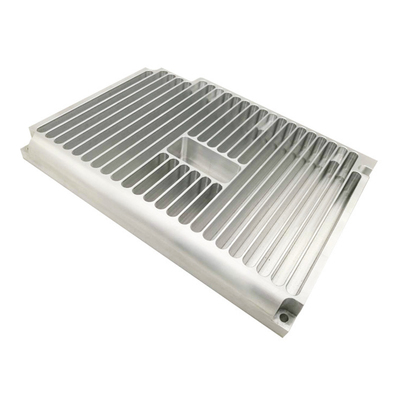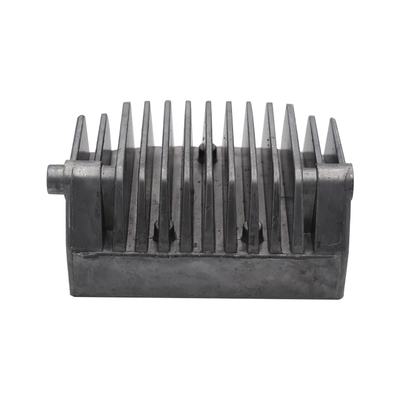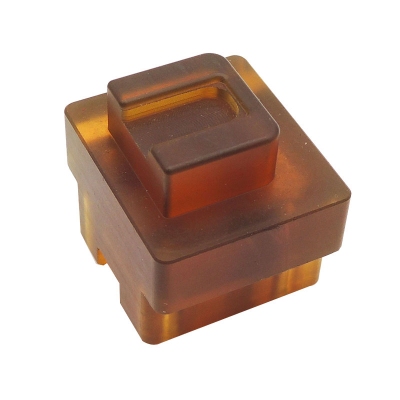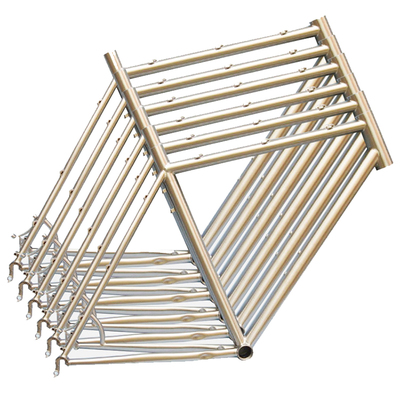What Factors Are Affecting The Tensile Test Of Metal Materials
Tensile test is the most common experiment in the mechanical property test of metal materials. It is said that the tensile test reflects the basic properties of the material, but the measurement results of the same material through different tensile test processes are not necessarily the same. So what are the factors affecting the tensile test? Lets come look.
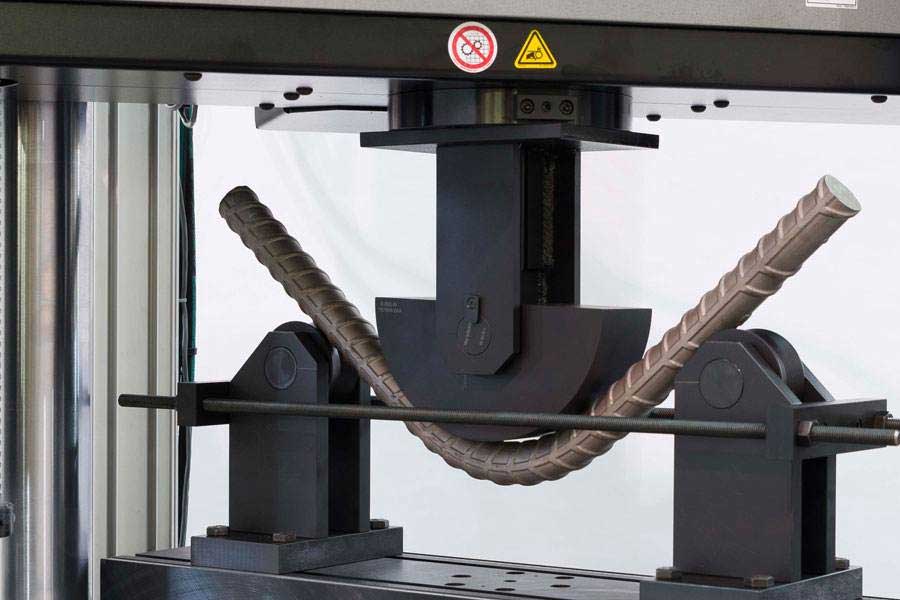
1. Sampling Location And Method
The difference of the sampling position will directly affect the elongation after fracture, the yield strength and the tensile strength of the metal material in the tensile test. Due to the uneven distribution of composition, organization, structure, defects, processing deformation, etc. in metal materials, the mechanical properties of different parts of the same batch or even the same product are different. Therefore, sampling should be carried out strictly in accordance with the provisions in the appendix of GB/T 228- 2002. In addition, when cutting the sample blank, it is necessary to prevent its mechanical properties from being affected by heat, work hardening and deformation.
2. The Shape, Size And Accuracy Of The Sample
For metal materials of the same material and in the same state, if the cross-sectional shape is different, the measured results will have a greater impact on the upper yield strength and little impact on the lower yield strength; the tensile strength of the sample with a large cross-sectional area (large size) is smaller. Low, and the plasticity index also decreases; the parallelism and dimensional accuracy within the parallel length of the specimen can easily affect the test results. Because the measured size value of the sample may not be the smallest position size of the actual sample, this will cause the test result to be low. Therefore, the shape and size of the test piece must be carried out in accordance with the standard.
3. Measuring Instruments
The accuracy of dimensional measuring instruments and measuring tools must meet the test requirements. Therefore, it is necessary to calibrate various measuring instruments before conducting the test, while keeping the measuring tools clean.
4.Test Equipment
Testing machine and extensometer are two kinds of testing equipment commonly used in tensile testing of metal materials, which directly affect the accuracy and authenticity of the test results. The former is used to measure the force value; the latter is mainly used to measure displacement or extension. Therefore, during the test, it is necessary to ensure that the testing machine and the extensometer are within the valid period of verification, and verify them regularly.
5. Test Environment Temperature
Some metal materials have high temperature sensitivity, even for ordinary metal materials, if the test temperature is too different, it may cause inconsistent test results. Generally speaking, as the temperature decreases, the yield strength of body-centered cubic metals increases sharply, while the change of face-centered cubic metals is not so obvious. As the temperature rises, the yield strength of metal materials generally decreases. Therefore, GB/T 228-2002 stipulates the room temperature tensile test method for metallic materials, the test should generally be carried out in the range of 10℃-35℃ at room temperature. The test temperature with strict temperature requirements should be 23℃±5℃.
6.The influence of the selection of clamps and sample clamping
Incorrect selection of clamps, specimen clamping, and loading and unloading of the extensometer will affect the test results. The shape of the clamp and the test sample is not matched and the surface appearance of the clamp is not suitable, which will cause a sufficient clamping area between the clamp and the sample, and insufficient static friction, resulting in the clamp and the sample during the stretching process. Relative sliding occurs, which affects the stretching result.
7.Clamping method
The clamping method of the specimen is very important to the success of the tensile test. If the specimen cannot be clamped, the test cannot be carried out. If the clamping method is unreasonable, it will easily cause the specimen to slip or break in the jaws, resulting in The test data is inaccurate or the test data is low.
8. Stretching rate
The stretching rate directly affects the stress-strain relationship of metal materials. Different materials have different sensitivity to speed, and the tensile rate has different effects on different materials, but it has a greater impact on materials with low strength and good plasticity. GB/T 228- 2002 stipulates the room temperature tensile test method for metallic materials: "In the elastic range and up to the upper yield strength, the separation rate of the chuck of the testing machine should be kept as constant as possible and within the specified stress rate range. (Material elastic modulus E<150000N/mm2, stress rate in the range of (2-20)N/mm2•s-1, elastic modulus E≥150000N/mm2, stress rate in (6-60)N/mm2• s-1 range). If only the lower yield strength is measured, the strain rate during the yield period of the parallel length of the specimen should be between 0.00025/s-0.0025/s, and the strain rate within the parallel length should be kept as constant as possible. In plasticity The range and the strain rate up to the specified strength should not exceed 0.0025/s"
9.Determination of the cross-sectional area of the tensile specimen
There are two methods for determining the cross-sectional area of tensile specimens: one is the metal tensile test method GB/T 228, and the other is the corresponding product standard of the material. Some product standards clearly stipulate that the cross-sectional area of the tensile test specimen is required by the nominal size of the cross-sectional area. If there is no such special requirement in the product standard, the GB/T 228 standard should be followed to measure the actual size of the cross-sectional area.
10. Measurement method of sample size and measurement human error
Depending on the diameter of the tensile specimen, an outside micrometer, a vernier caliper or a vernier caliper for rectangular samples should be selected. If the measurement method is not accurate, the size measurement will be too large artificially. Due to different subjective factors and operating techniques, errors will also be brought to the measurement results.
Some Basic Issues
For most metal materials, in the elastic deformation area, the stress and the strain become proportional. When the stress or strain is continuously increased, at a certain point, the strain will no longer be proportional to the applied stress.
At this point, the bond with the adjacent initial atom begins to break and is transformed with a new set of atoms. When this happens, the material will no longer return to its original state after the stress is removed, that is, the deformation is permanent and unrecoverable, and the material enters the plastic deformation zone (Figure 1).
In fact, it is difficult to determine the exact point at which the material transitions from the elastic zone to the plastic zone. As shown in Figure 2, a parallel line with a strain of 0.002 is drawn. The stress-strain curve is cut off with this line, and the yielding stress is determined as the yield strength. The yield strength is equal to the stress at which significant plastic deformation occurs. Most materials are not uniform, nor are they perfect ideal materials. Material yielding is a process, usually accompanied by work hardening, so it is not a specific point.
For most metal materials, the stress-strain curve looks similar to the curve shown in Figure 3. When the loading starts, the stress increases from zero and the strain increases linearly until the material yields, and the curve begins to deviate from the linearity.
Continue to increase the stress and the curve reaches its maximum value. The maximum value corresponds to the tensile strength, which is the maximum stress value of the curve, represented by M in the figure. The breaking point is the point where the material finally breaks, represented by F in the figure.
The typical stress-strain test device and the geometry of the test sample are shown in Figure 4. During the tensile test, the sample is slowly pulled while recording the changes in length and applied force, and the force-displacement curve is recorded. The stress-strain curve can be drawn using information such as the original length, gauge length and cross-sectional area of the sample.
For materials that can undergo tensile plastic deformation, there are two types of curves most commonly used: engineering stress-engineering strain curve and true stress-true strain curve. The difference between them lies in the area used when calculating the stress. The former uses the initial area of the sample, and the latter uses the real-time cross-sectional area during the stretching process. Therefore, on the stress-strain curve, the true stress is generally higher than the engineering stress.
There are two most common stretching curves: one is the stretching curve with an obvious yield point; the second is the stretching curve without an obvious yield point. The yield point represents the resistance of the metal to the initial plastic deformation. This is one of the most important mechanical performance indicators in engineering technology.
How to define the plastic deformation of the actual metal in the project?
The amount of residual plastic deformation is an important basis. Usually, the resistance of the engineering metal at a certain amount of residual plastic deformation is artificially regarded as the yield strength, which is also called the conditional yield strength. That is, if there is no obvious plastic yield point, there is no obvious yield strength. If you want to know the yield strength of the actual metal, you need a judgment condition, so there is a conditional yield strength.
For different metal components, the residual deformation corresponding to the conditional yield strength is different. For some harsh metal components, the residual deformation should be small, while the corresponding residual deformation when the ordinary metal component yields is relatively large. The commonly used residual deformation is 0.01%, 0.05%, 0.1%, 0.2%, 0.5% and 1.0%.
The yield of the metal is the result of the movement of the dislocation, so the yield of the metal is determined by the resistance of the movement of the dislocation. For pure metals, it includes lattice resistance, dislocation interaction resistance, and dislocation interaction resistance with other defects or structures.
The straight line segment on the stretch curve, that is, the area corresponding to the elastic part is the elastic energy. From the beginning of elastic deformation to fracture, the total energy absorbed by the sample is called fracture work, and the energy absorbed by the metal before fracture is called fracture toughness. The actual metal is usually accompanied by changes in mechanical properties during the stretching process. The most prominent phenomenon is work hardening. The work hardening of metal is beneficial to avoid sudden breakage of actual engineering components when overloaded, causing catastrophic consequences.
Metal plastic deformation and deformation hardening are the prerequisites for ensuring uniform plastic deformation of metals. This means that in polycrystalline metals, where plastic deformation occurs, where it is strengthened, plastic deformation is suppressed, and the deformation is transferred to other more components. Easy place.
From the actual tensile curve, after most metals yield at room temperature, the deformation will not continue under the action of the yield stress, and the resistance must be increased to continue the deformation. On the true stress-true strain curve, it shows that the flow stress continues to rise, and the phenomenon of work hardening appears. Such a curve is called a work hardening curve. The work hardening index n is an important plastic index, which represents the ability of the material to resist continued deformation.
Finally, talk about strain rate. Generally, the tensile curves of metal materials tested are obtained by testing at a lower strain rate. Only some special metal components need to be tested for their mechanical properties at a higher strain rate, that is, components that undergo high-speed deformation. Under normal room temperature conditions, the strain rate is stretched, and the deformation of the material is mainly the slip or twinning of dislocations.
On the tensile curve, that is, the maximum engineering stress on the engineering strain-engineering strain curve is called the ultimate tensile stress, that is, the tensile strength.
Link to this article: What factors are affecting the tensile test of metal materials
Reprint Statement: If there are no special instructions, all articles on this site are original. Please indicate the source for reprinting:https://www.cncmachiningptj.com/,thanks!
 PTJ® provides a full range of Custom Precision cnc machining china services.ISO 9001:2015 &AS-9100 certified. 3, 4 and 5-axis rapid precision CNC machining services including milling, sheet metal to customer specifications,Capable of metal & plastic machined parts with +/-0.005 mm tolerance.Secondary services include CNC and conventional grinding, laser cutting,drilling,die casting,sheet metal and stamping.Providing prototypes, full production runs, technical support and full inspection.Serves the automotive, aerospace, mold&fixture,led lighting,medical,bicycle, and consumer electronics industries. On-time delivery.Tell us a little about your project’s budget and expected delivery time. We will strategize with you to provide the most cost-effective services to help you reach your target,Welcome to Contact us ( [email protected] ) directly for your new project.
PTJ® provides a full range of Custom Precision cnc machining china services.ISO 9001:2015 &AS-9100 certified. 3, 4 and 5-axis rapid precision CNC machining services including milling, sheet metal to customer specifications,Capable of metal & plastic machined parts with +/-0.005 mm tolerance.Secondary services include CNC and conventional grinding, laser cutting,drilling,die casting,sheet metal and stamping.Providing prototypes, full production runs, technical support and full inspection.Serves the automotive, aerospace, mold&fixture,led lighting,medical,bicycle, and consumer electronics industries. On-time delivery.Tell us a little about your project’s budget and expected delivery time. We will strategize with you to provide the most cost-effective services to help you reach your target,Welcome to Contact us ( [email protected] ) directly for your new project.

- 5 Axis Machining
- Cnc Milling
- Cnc Turning
- Machining Industries
- Machining Process
- Surface Treatment
- Metal Machining
- Plastic Machining
- Powder Metallurgy Mold
- Die Casting
- Parts Gallery
- Auto Metal Parts
- Machinery Parts
- LED Heatsink
- Building Parts
- Mobile Parts
- Medical Parts
- Electronic Parts
- Tailored Machining
- Bicycle Parts
- Aluminum Machining
- Titanium Machining
- Stainless Steel Machining
- Copper Machining
- Brass Machining
- Super Alloy Machining
- Peek Machining
- UHMW Machining
- Unilate Machining
- PA6 Machining
- PPS Machining
- Teflon Machining
- Inconel Machining
- Tool Steel Machining
- More Material

